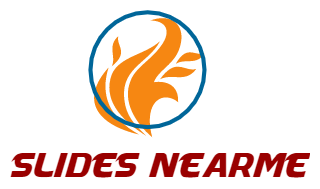SlideSolutions | When Landslides Strike
Awards & Nominations
SlideSolutions has received the following awards and nominations. Way to go!
The Challenge | When Landslides Strike
Slides NearME
An interactive and easy to use mobile app that enables both citizens and disaster management teams to make informed decision before a suspected landslide event.

Introduction
Landslides are one of the common hazard inhilly terrains causing massive damage to life and property. We came up with an app “Slides NearME” thattransforms landslide data into understandable information for everyone. Our application combines observations send bythe users, with NASA landslide data, to generate regularly updated landsliderisk maps for an area. Thus, individuals and disaster managers will be better prepared toreduce landslide risk, and build a resilient community!
Explanation
- “Slides NearME” an application that provides a desktop web-interface to disaster managers and a mobile-based interface to citizens.
- The mobile interface allows the citizens to send observations and geo-tagged photos of occurrences such as cracks, leaning poles etc to a central server.
- A predictor model for landslides occurrences that provides the overall landslide occurring zones in a country. It makes use of open-source data such as Digital Elevation models, NASA rainfall data (Tropical Rainfall Measuring Mission - TRMM and global precipitation measurement - GPM), land cover maps from satellite image classification of Sentinel -2 data, National geological maps.
- The central server (Web Processing Service) facilitates generation of a risk map on a web-application using the four layers: and slide prediction map from our predictor model, NASA Landslide Hazard Assessment for Situational Awareness (LHASA), Open Street map API and the crowd-sourced information from the local people.
- The LHASA is weekly updated layer that shows the areas at risk after a particular rainfall event. This allows the disaster management team to narrow down the focus to potential landslide risk areas.
- The end product of the app is the updated risk map which is more reliable to use.
Direct Stakeholders: The general public;living in landslide vulnerable areas and emergency management teams (local,national or international).
Potential Stakeholders: Government(Disaster Management Authority), United NationsOffice for Disaster Risk Reduction (UNISDR), International Consortium ForLandslides (ICL), Asia Disaster Preparedness Center (ADPC) and academia.
Innovation: Integrationof mobile and web-based desktop application for our target users, incorporatingcrowd-sourced observations and system generated updated landslide risk mapsalong with preparedness guidelines for the users.
Impact: The riskmap benefits directly to the community and the emergency system with an overallimpact guiding towards better preparedness and reduction of landslide risks.
SpaceApps is a NASA incubator innovation program.